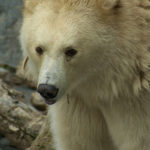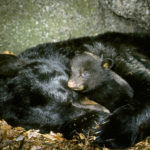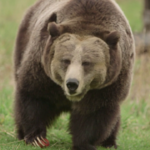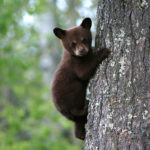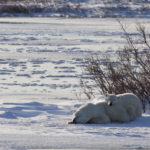Polar bears – information
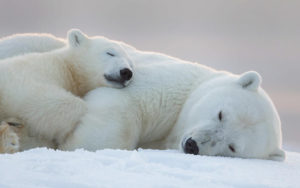 The polar bear is a member of the bear family, a group of predatory mammals, a beehive. The largest species of the genus. The body weight of a polar bear can reach 800 kg. The average weight of a male is 400-450 kg, females – 350-380 kg. Body length: for males – 200-250 cm, for females – 160-250 cm. Height at withers – 130-150 cm. The species is characterized by white fur color.
The polar bear is a member of the bear family, a group of predatory mammals, a beehive. The largest species of the genus. The body weight of a polar bear can reach 800 kg. The average weight of a male is 400-450 kg, females – 350-380 kg. Body length: for males – 200-250 cm, for females – 160-250 cm. Height at withers – 130-150 cm. The species is characterized by white fur color.
This is the largest terrestrial predator – the only species of land mammals that has completely passed from life on Earth to life on the drifting sea ice of the Arctic Ocean basin.
The polar bear usually adheres to pack ice, swims well, makes seasonal roosts. Under optimal ice conditions polar bears can reach the North Pole. However, their main habitats are the zone of the continental shelf along the periphery of the Arctic Ocean.
The polar bear is a skilled hunter. His sight, smell, and hearing are very well developed. Its main prey is two numerous species of Arctic seals: the ringed seal and the Lahtak (sea hare). For the seal hunting, polar bears use different methods: they wait at the holes in the ice, through which the seals leave for rest, they catch the seal in the winter in snow holes, creep up and attack from the water. The mighty power of a polar bear allows him to hunt not only for seals, but also for more serious enemies – walrus and beluga (Arctic white whale).
Bears usually live alone and there are no real social groupings, although hierarchical relations can be established between forced animals during forced clusters. They are sufficiently peaceful with respect to each other.
But adult males can be dangerous for cubs. Therefore, for the birth of the female gather in certain places, the so-called maternity homes, where they dig out the lairs in the snow. For the winter lie in hibernation for 50-80 days (maximum to 106 days).
Pregnancy lasts about 230-250 days. Childbirth occurs in the period from January to April. The female gives birth every 2-3 years to one or three cubs. The mass of newborns is 700-800 grams. Teddies are born blind and with closed auditory canals, skin pigmentation is absent. They catch sight on day 30-31, at the same time they have auditory aisles. Teeth slit by the end of the second month, then the cubs begin to crawl out of the den. Puberty occurs in the third or fourth year.











